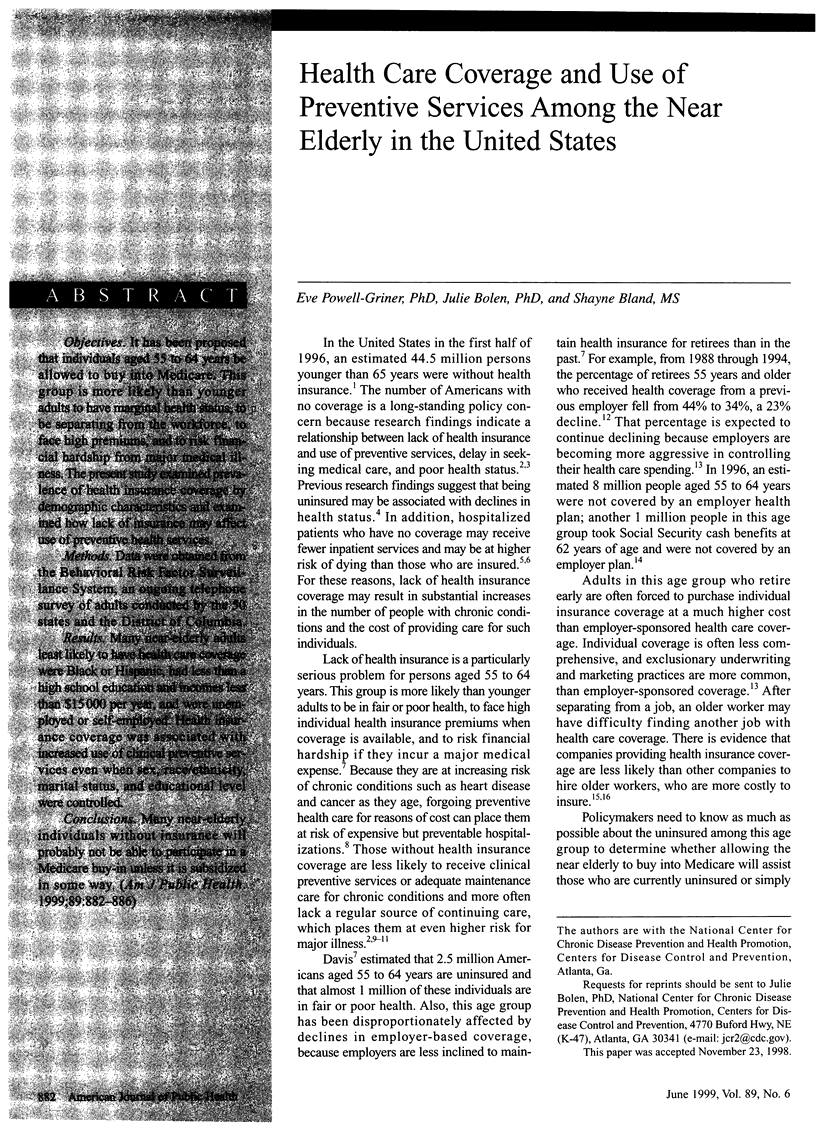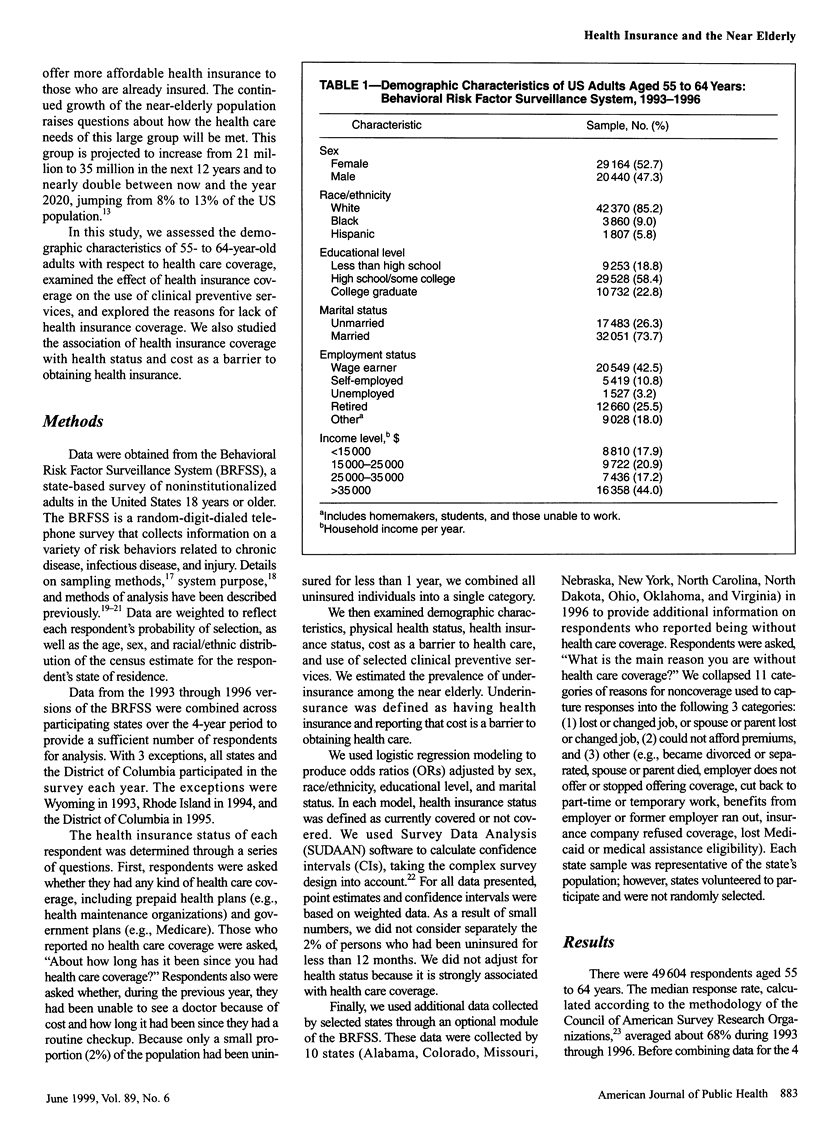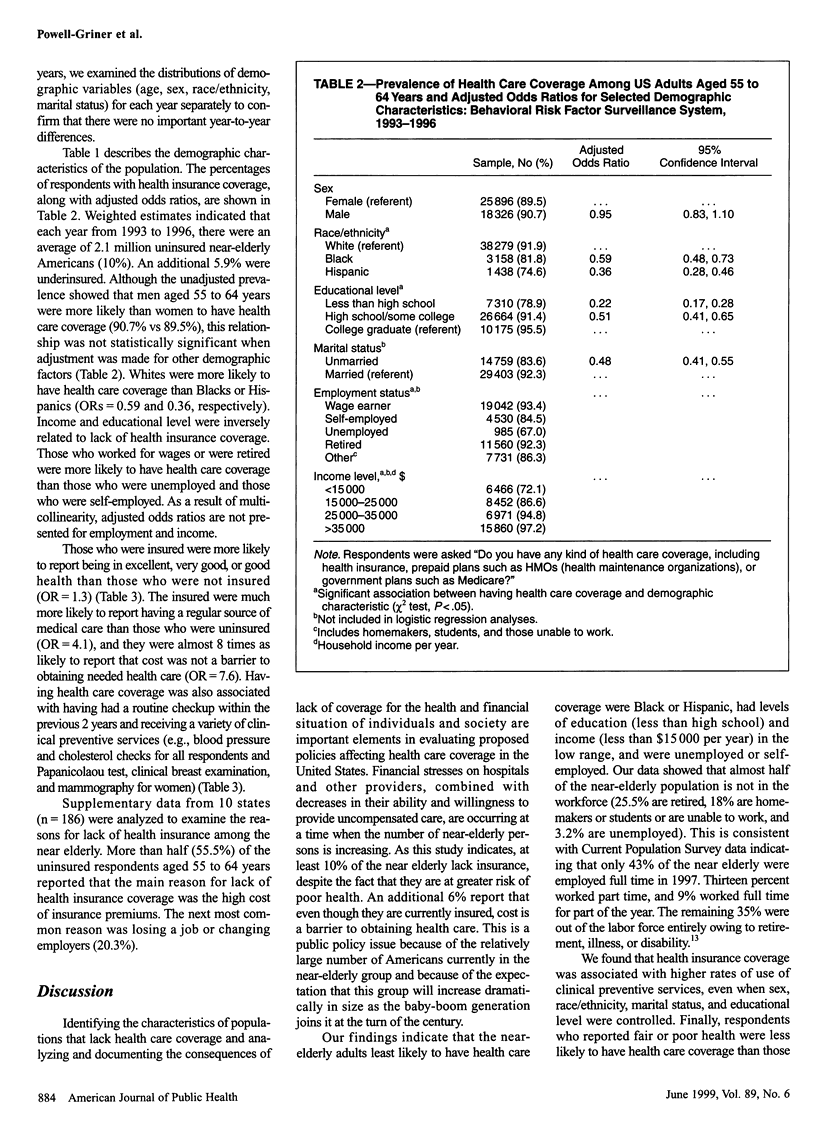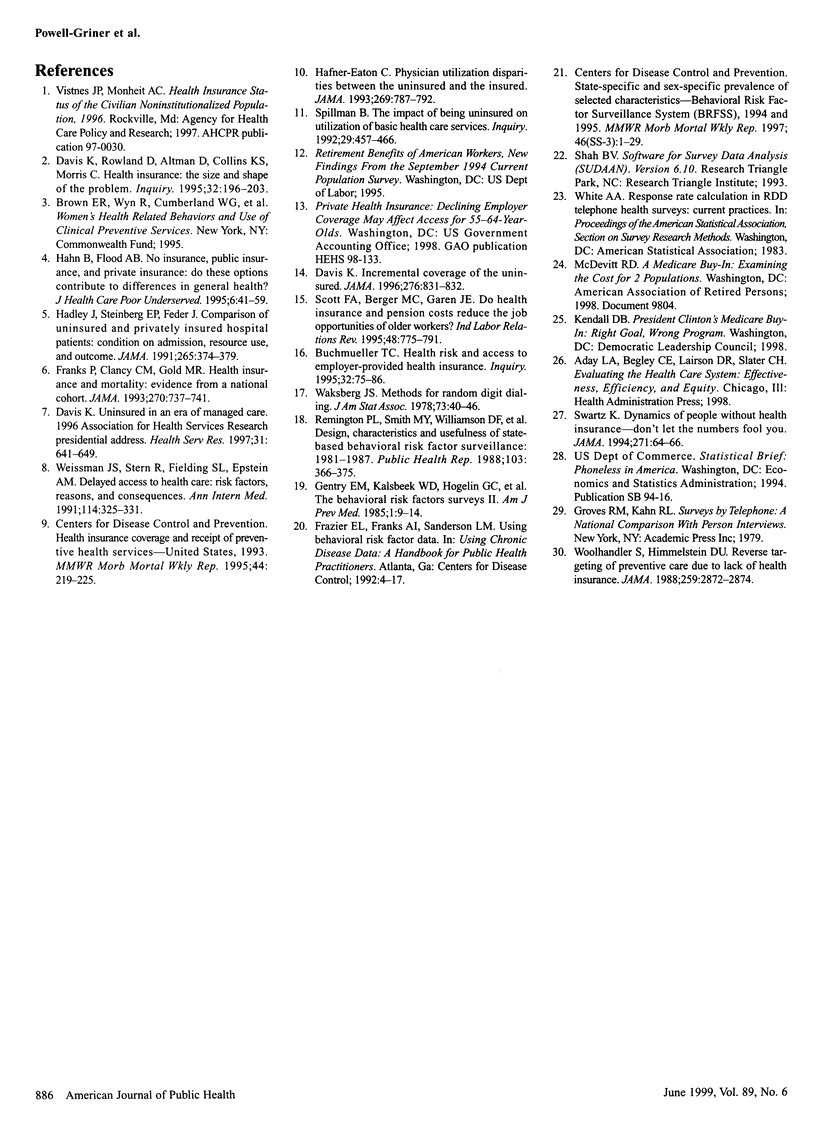Abstract
OBJECTIVES: It has been proposed that individuals aged 55 to 64 years be allowed to buy into Medicare. This group is more likely than younger adults to have marginal health status, to be separating from the workforce, to face high premiums, and to risk financial hardship from major medical illness. The present study examined prevalence of health insurance coverage by demographic characteristics and examined how lack of insurance may affect use of preventive health services. METHODS: Data were obtained from the Behavioral Risk Factor Surveillance System, an ongoing telephone survey of adults conducted by the 50 states and the District of Columbia. RESULTS: Many near-elderly adults least likely to have health care coverage were Black or Hispanic, had less than a high school education and incomes less than $15,000 per year, and were unemployed or self-employed. Health insurance coverage was associated with increased use of clinical preventive services even when sex, race/ethnicity, marital status, and educational level were controlled. CONCLUSIONS: Many near-elderly individuals without insurance will probably not be able to participate in a Medicare buy-in unless it is subsidized in some way.
Full text
PDF




Selected References
These references are in PubMed. This may not be the complete list of references from this article.
- Buchmueller T. C. Health risk and access to employer-provided health insurance. Inquiry. 1995 Spring;32(1):75–86. [PubMed] [Google Scholar]
- Davis K. Incremental coverage of the uninsured. JAMA. 1996 Sep 11;276(10):831–832. [PubMed] [Google Scholar]
- Davis K., Rowland D., Altman D., Collins K. S., Morris C. Health insurance: the size and shape of the problem. Inquiry. 1995 Summer;32(2):196–203. [PubMed] [Google Scholar]
- Davis K. Uninsured in an era of managed care. Health Serv Res. 1997 Feb;31(6):641–649. [PMC free article] [PubMed] [Google Scholar]
- Franks P., Clancy C. M., Gold M. R. Health insurance and mortality. Evidence from a national cohort. JAMA. 1993 Aug 11;270(6):737–741. [PubMed] [Google Scholar]
- Gentry E. M., Kalsbeek W. D., Hogelin G. C., Jones J. T., Gaines K. L., Forman M. R., Marks J. S., Trowbridge F. L. The behavioral risk factor surveys: II. Design, methods, and estimates from combined state data. Am J Prev Med. 1985 Nov-Dec;1(6):9–14. [PubMed] [Google Scholar]
- Hadley J., Steinberg E. P., Feder J. Comparison of uninsured and privately insured hospital patients. Condition on admission, resource use, and outcome. JAMA. 1991 Jan 16;265(3):374–379. [PubMed] [Google Scholar]
- Hafner-Eaton C. Physician utilization disparities between the uninsured and insured. Comparisons of the chronically ill, acutely ill, and well nonelderly populations. JAMA. 1993 Feb 10;269(6):787–792. [PubMed] [Google Scholar]
- Hahn B., Flood A. B. No insurance, public insurance, and private insurance: do these options contribute to differences in general health? J Health Care Poor Underserved. 1995;6(1):41–59. doi: 10.1353/hpu.2010.0333. [DOI] [PubMed] [Google Scholar]
- Remington P. L., Smith M. Y., Williamson D. F., Anda R. F., Gentry E. M., Hogelin G. C. Design, characteristics, and usefulness of state-based behavioral risk factor surveillance: 1981-87. Public Health Rep. 1988 Jul-Aug;103(4):366–375. [PMC free article] [PubMed] [Google Scholar]
- Spillman B. C. The impact of being uninsured on utilization of basic health care services. Inquiry. 1992 Winter;29(4):457–466. [PubMed] [Google Scholar]
- Swartz K. Dynamics of people without health insurance. Don't let the numbers fool you. JAMA. 1994 Jan 5;271(1):64–66. [PubMed] [Google Scholar]
- Weissman J. S., Stern R., Fielding S. L., Epstein A. M. Delayed access to health care: risk factors, reasons, and consequences. Ann Intern Med. 1991 Feb 15;114(4):325–331. doi: 10.7326/0003-4819-114-4-325. [DOI] [PubMed] [Google Scholar]
- Woolhandler S., Himmelstein D. U. Reverse targeting of preventive care due to lack of health insurance. JAMA. 1988 May 20;259(19):2872–2874. [PubMed] [Google Scholar]


